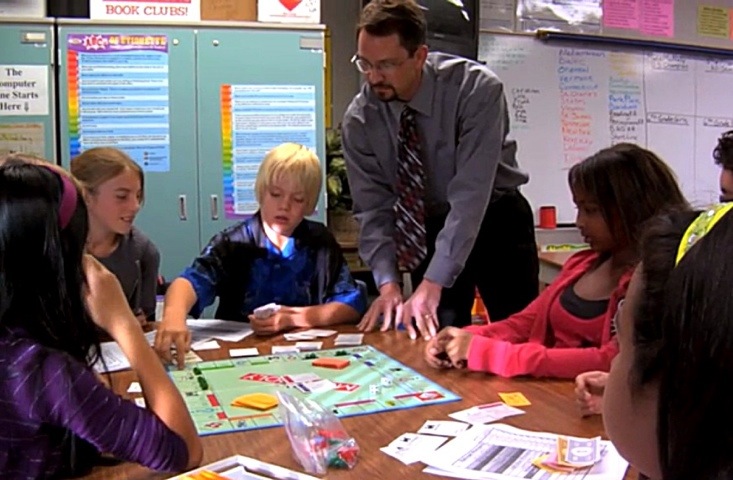I can’t resist a documentary about competitive subcultures, like the amazing Word Wars and Wordplay – docs about Scrabble and crossword puzzles, respectively. Even better when I come across one that is both game-oriented and competitive. The excellent documentary, Under the Boardwalk: The Monopoly Story ably satisfies both requirements – and then some.
Like many of you I’m sure, monopoly is a game that you’ve been playing since you were a child – with lots of fond memories of family and friends. If you have a keen eye for the game (and an interest in game design), you’ll also notice some quirks/limitations around play, namely:
- The outcome is mostly set by the first few moves (e.g. whoever gets the best properties up front)
- Games often drag on forever
- Play quickly becomes pointless once someone develops an insurmountable advantage
- Players have added a host of “house rules” to the game over the years
Each one of those design “flaws” is explained and neutralized in the movie. While the players at the US and World championships – which are both shown in surprisingly tense footage – don’t offer any design suggestions, they actually play the game quite differently from how you might at home. They are looking for total domination, and optimize games to ensure faster failure. Contrast this with the average home player who is typically looking for a longer, more interactive game: competitive players actually use a special game piece called a speed die to accelerate the game. The purpose of the speed die is to force you to buy properties faster and land on them/pay mortgage faster.

In other words, this game – which was designed to express the killer nature of capitalism – appeals to killer personas precisely because it’s possible to completely dominate others. And those killers, loving the thrill of winning or losing, rebalance the game in favor of fast results. This is true of my co-author on Gamification by Design, Christopher Cunningham. In regular life, he’s one of the nicest guys you’ll ever meet, but if you sit him down in front of a Monopoly game, be prepared to play total annihilation. Other personality types, like socializers and explorers, add house rules to games (like money in free parking) to try and extend their lifespan, perversely making it less appealing to play. The lesson: it’s probably better to let the game be what it is than modify it, though it’s interesting to note how we graft our own motivational preferences for play on top of it.
Beyond the design lessons of Monopoly, the movie helps illustrate its many uses in teaching, beginning with its origins. The killer modality turns out not to be an accident by any means, but rather – the original game was designed as an anti-capitalist screed – meant to illustrate how property ownership quickly enriched the wealthy and permanently impoverished everyone else. So what feels maddening is actually the purpose of the game — though it wasnt until those lessons were obfuscated did sales really take off.

As a teaching tool, Monopoly also excels. In the film we’re introduced to Tim Vandenberg, a US championship finalist and teacher from California who uses Monopoly play as both an incentive and teaching tool. Students at his middle school who test well are given the chance to take a class featuring Monopoly. They play the game, learning probabilistic math and negotiation skills through play. Vandenberg has even modified a Monopoly board with both math clues as well as history lessons on the elements of monopoly play to reinforce learning at every turn.
During the film, we also learn one of the other interesting game design quirks of Monopoly. Like many of the most enduring games in human history (e.g. Chess, Bridge, Checkers, Go) the game was actually “crowdsourced”. From the original design concept as an anti-capitalist teaching tool, Monopoly spent 30 years traversing the US as an ad-hoc game, changed countless times by hundreds of home players before ending up as the commercial product we know today. This crowdsourcing loop no doubt contributes to the tight gameplay and overall efficacy of the experience.
Beyond the myriad uses of Monopoly in the film and the championship plot line, Under The Boardwalk also talks about many topics near and dear to Gamification designers’ hearts, including the drive to collect, killer personae and game mechanics. Even if you’re not a Monopoly nerd, the movie is fascinating and well-executed, delivering meaningful insight for anyone interested in competition, Gamification design and total domination.
Watch it on Netflix or check out the movie’s official page.
Images Copyright Under the Boardwalk LLC and Hasbro.








Gabe, have you watch the indie doc “Going Cardboard”?